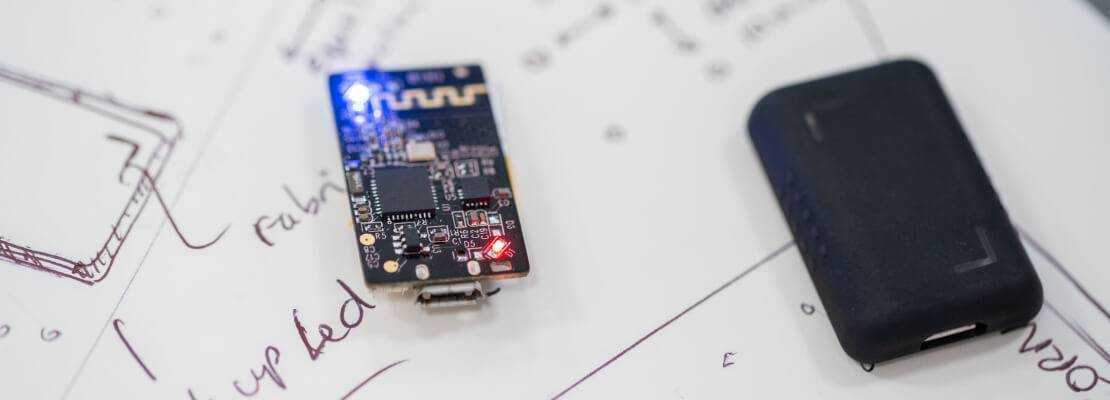Talking about the connected technology or the Internet of Things, initiatives like these are reaching out to unexpected places including farmlands, basketball courts, and restaurants.
The Internet of Things (IoT) is entering our daily lives at a fast pace. This suggests most of us won’t even have an idea that this type of technology is prevailing around us. In short, IoT and the products relying on it would serve as an integral part of our lives in the near future.
In order to frame out the viability of an IoT product, what you need is an IoT prototype. It helps to understand the essential aspects of such a product.
The IoT sensor is connected through the device, end-user interface, enterprise integration, cloud and network. Apart from it being a rewarding engineering process, creating a prototype could turn out to be a frustrating job.
Internet of Things (IoT) Explained
Most probably, you have heard of it before. If not, here are some of the most essential aspects of the IoT. To put it simply, IoT is referred to as the convergence between microcontrollers, services, wireless technology, and the internet.
Usually, devices and the internet are two primary factors of IoT. If you have a device that is capable of connecting you to the internet, you can start creating an IoT platform. Such a device helps to exchange data and information via the internet.
Moreover, the use of sensors allows specific equipment to record data and shares it with connected devices. Any device connected to the internet can serve as a source or destination of such information.
What is IoT Prototyping?
IoT prototyping is the process of making IoT devices and hardware. It involves using devices that are enhanced with embedded systems and smart sensors. Besides, a variety of other essential components like circuit boards and microcontrollers are also used.
Most of these technological solutions are easily available to the end-user. However, a prototype isn’t a market-ready product yet. It serves as a trial version of your innovation, which makes others believe that it can really work. You can see it as a proof of concept (POC).
How is IoT Prototyping different from other types of Prototyping
Building or creating a new product might prove to be a risky move. Therefore, manufacturers rely on prototyping a product before producing it on a large scale.
However, IoT prototyping is different from other processes involved while prototyping some other products. Hence, if you are new to this field, be prepared for some surprises.
You don’t require a production-ready prototype
If you have prototyped a web application or a mobile product before, it might have been similar to the end product. On the contrary, IoT products are much complicated.
The reason for this is the hardware used during prototyping is quite different from one that you will be using while producing an IoT product on a massive scale. The software also becomes more challenging as the product reaches its final phase.
In addition, you also need to consider the complications that you may encounter while integrating third-party software and hardware.
Try not to underestimate the overall production costs
Usually, products don’t fail due to a bad idea. Meaning, the basic cause of the failure of a product might be related to the limited resources available. In fact, the true cost of building hardware at a large scale requires some extra funds.
As the budget needed gets overwhelming, it detracts most of the entrepreneurs and small businesses. To deal with this issue, the manufacturer should not rely on expensive hardware. So the best way is to get the most out of the software.
You might need to build components at your own
While building an IoT product, you might not get that much assistance. Hence, you have to pave your way when creating such a product. Unlike prototyping regular or traditional software, you won’t be able to get much help through pre-existing libraries and architectures.
At present, most IoT developers need to start from scratch. However, there are possibilities that more and more pre-built components might be available in the future, especially if the IoT continues to grow at a similar pace.
Basically, IoT products need a hardware and software layer. As a result, you need to deliver the physical devices at a specific destination to receive the feedback.
Furthermore, users aren’t that familiar with the IoT technologies, therefore it requires you to provide detailed setup instructions.
Make sure to Create a functional IoT product
In simple words, attaching a chip to a device and creating a connection between a device and the internet doesn’t mean that you have created an IoT product. Most of the people consider it this way, which results in failure.
On the other hand, you need to consider the behaviour and functionality of your IoT product. It should be easy to use and doesn’t require much of a hassle to make it work continuously.
Therefore, one can state that IoT isn’t all about creating outstanding and impressive tech, but it relates to the creation of useful and essential tech for the end-users.
Need to Rely more on Software
An IoT product should be flawless. Nevertheless, the provision of issues like following multiple setups forces users to give up. To address this issue, it is essential to use functional software for enhancing the user experience.
Conclusion
With the availability of multiple platforms and tutorial videos over the internet, it is now quite easy to build required prototype within less time. However, it takes a lot of effort to improve a prototype to such an extent that it could serve as a viable choice for mass production.
It requires planning, skills, and patience for creating a highly functional and easy to use IoT product. Especially, if a company doesn’t have in-house resources, things might get even more complicated.
Furthermore, you have to make a variety of hard decisions regarding the selection of hardware and software. To conclude, creating the first IoT prototyping is as hard as running your first marathon.


